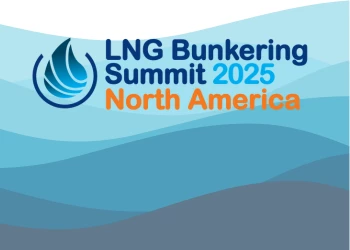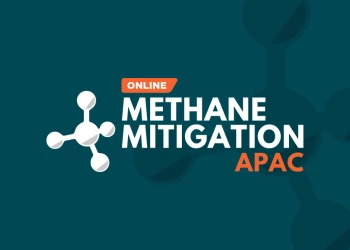Is The Cost Of Conventional LNG Projects Raising The Justification For FLNG?
Add bookmark
[eventpdf]
Tony Regan, Principal Consultant for Tri-Zen Asia, and the Chairman for the 8th Annual FLNG Asia Pacific Summit explains to Bryan Camoens why cost is the primary driver of FLNG over conventional LNG. He also talks about the current trends in FLNG that is shaping the future of the sector and compares the key criteria of small versus large projects.
Bryan Camoens: What are some of the critical drivers for the substitution of FLNG over conventional LNG?
Tony Regan: Cost, cost, and cost. The big problem is that conventional LNG projects have gotten extremely expensive. We are now talking about the latest Australian projects costing about $4 thousand per total capacity -- a very sharp increase in cost over the last few years and some view that that sort of figure will lead to the product sponsors only just being able to get a reasonable ROI, so a big change in the cost and economic profile of these projects over the last few years, and therefore, there is a real need to find low-cost ways or breaking on LNG and the most attractive does seem to be floating LNG.
First of all, you cut out some of the costs -- there is no pipeline from the field to the shore, there are no onshore bursts, there is no need for dredging and things like that. So there are significant cost savings that we made straightaway, and then people we are looking to see whether they can actually reduce the cost of the leak fraction by the modular, simpler approach by doing it for LNG.
Bryan Camoens: And what are the commercial parameters needed to make FLNG projects buyable, and will FLNG be a viable game changer for the LNG sector?
Tony Regan: Well, again, it comes back to cost. So the FLNG sponsors have gotten to prove to the world that this is a low-cost way of bringing on the equal fraction and quicker. Now, they should not be too difficult to do that because another issue has been the time that was taken to develop some of the conventional LNG projects 15-16 years in the case of Gorgon, and so these projects have very high development costs.
And so if you can also find a way of reducing the development period, like for instance, not having to worry about lengthy site selection processes or long environmental reviews, is another benefit to floating FLNG. So again, it comes back to costs and so the FLNG sponsors have got to prove to the world that it is a cheaper and faster way of liquefying LNG.
Bryan Camoens: Could you please tell us what the right size for FLNG projects is and what are the key criteria of small versus large projects?
Tony Regan: We have got two caps emerging. We have probably got 13-14 potential FLNG projects and there is a big difference in the maturity of some of the concepts, but they split evenly in half between those looking for a vessel-based solution and those going for bigger sort of barge and floating platform solution.
Now, the attraction of smaller vessel-sized solution is that the vessel would be mostly hard to build because it is going to be a similar size to existing gas carriers, and so we know there are plenty of slots in shipyards that are able to do that.
The drawback with the vessel-size option is you are compressing a lot of kitten into a very small space and that raises issues about sort of safety limits and things like that, which means others have gone back to saying "No, we would rather do it on a much bigger platform such as Shell's prelude", but you have got two camps now and you have got a small FLNG which is typically 1.5 to 2.5 million tons of production capacity and enlarge which can range from 3 to 5, although, most people are looking at a larger are also in the sort of 3 to 3.5 million ton range.
Bryan Camoens: With regards to the cost effectiveness and utility of effectiveness of small-size FLNG vessel for stranded gas, what are some of the biggest difficulties that need to be overcome?
Tony Regan: For stranded, that raises a number of other issues, completely independent of the FLNG technology. One is sort of access to that gas and why it is stranded. One, it could be because of the gas quality for instance sort of very high CO2, and that is going to make it very difficult to monetize.
It could be for instance, the gas reserves are in a disputed zone so there could be a political difficult to get agreement to develop them. It could be that the existing owner either does not want to develop them yet or does not agree with the idea of developing them by FLNG, so that could be another constraint.
So there are numerous reasons why gas may be stranded, so we should not just also actually assume that any stranded gas is huge for FLNG. We can come up with 100 examples of stranded gas but probably 20 to 30 of those are actually CO2 and ready to be developed by FLNG.
What we are seeing is that the focus of attention which was initially West Africa then moved to Australia PNG -- and that is still the focus of attention for FLNG proponents, but we are now going back, looking a little more global. It looks that there is going to be a considerable gas in the east med, of Israel, or Cyprus.
Some of that could be monetized by floating LNG. East Africa, there is a possibility and then possibly, people could start looking at West Africa again. So we are coming from originally a sort of global view towards FLNG, then to focusing on Australasia, and now we are beginning to look elsewhere. I think probably, the industry has gained a lot of confidence by the fact that Shell took FID on prelude, so that was almost a stamp of approval of the FLNG concept. Now, more people are looking at where they could use that.
Bryan Camoens: In your opinion, what are some of the current trends in FLNG that is shaping the future of the sector?
Tony Regan: I think the most significant one was the fact that the original concept was for offshore development of floating LNG. Now, several of the proponents were actually looking at inshore liquefaction, and so that was something that was not this huge a couple of years ago when people were really looking primarily at offshore liquefaction, and then that throws up other possibilities which may be for even smaller units, a barge mounted approximately a million tons of liquefaction capacity, so that is the main trend.
The other one is we are not really seeing people go 4 to 5 million tons. It may come but I think even those are going for the bigger model, perhaps compromising a little and aiming for 3 - 3.5 million production initially.













